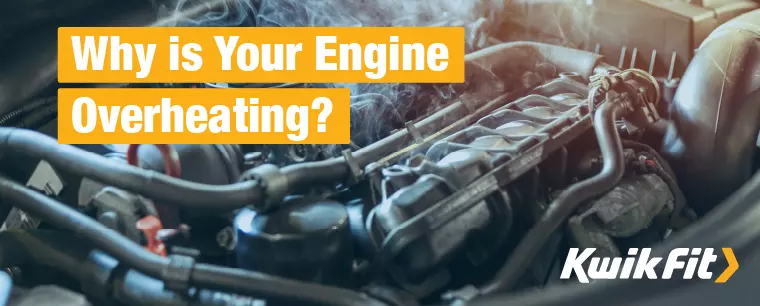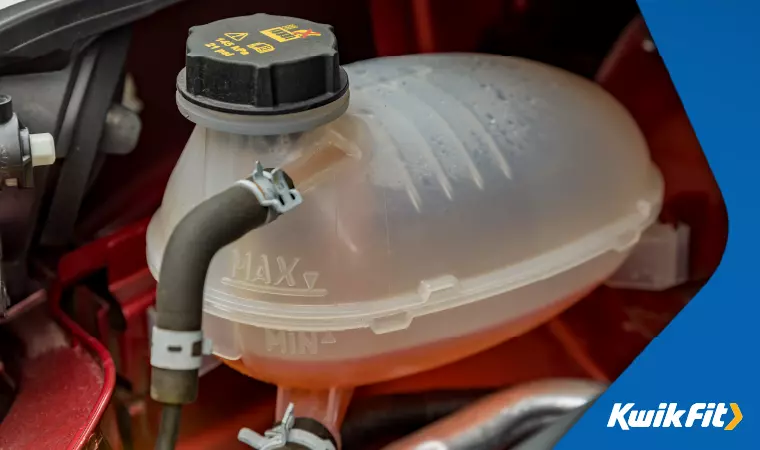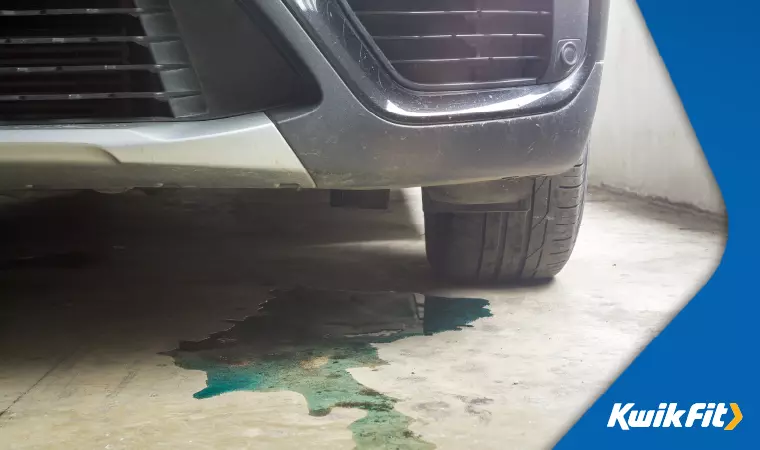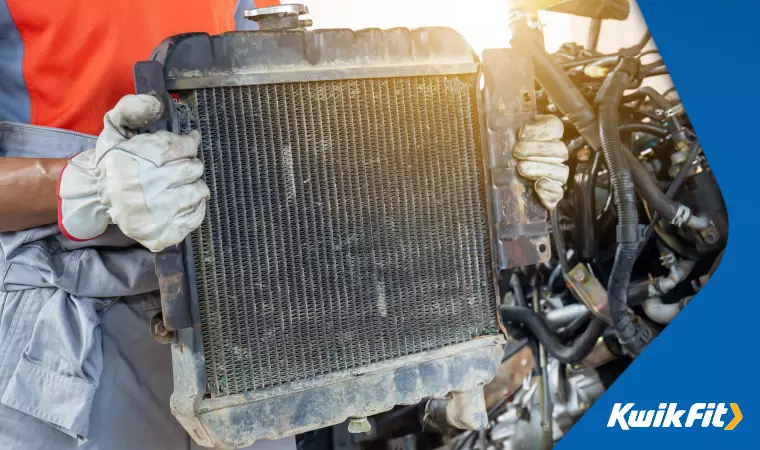Why is Your Engine Overheating?
Jack Dreyer | Tuesday 29th August 2023 10:00am

Engines, by virtue of being Ďinternal combustioní machines, get pretty darn hot Ė they contain literal explosions Ė but weíre relatively used to that, right? Itís not anything especially out of the ordinary for your carís bonnet to be hot to the touch after a long drive.
But if your carís Check Engine or Engine Temperature light turns on while youíre driving, you need to take notice, pull over in a safe space as soon as possible, and turn your car off. The lights themselves donít necessarily mean that something catastrophic has happened Ė it could be something as simple as leaving your fuel filler cap off Ė but continuing to drive with an engine issue is a quick way to create an expensive problem.
Crucially, most overheating is due to faults in the cooling system. Engines are supposed to get hot, but there are also systems specifically designed to cool them down again!
Letís look at some common reasons for engine overheating.

As much as coolant is designed specifically to be heated & cooled effectively, the heat-cool cycle for coolant makes it evaporate some parts over time. Eventually, if you leave the reservoir unchecked, you can actually end up with an empty reservoir ó but this is really quite rare without leaks. It takes so long to burn off an entire coolant reservoir under normal conditions that youíd have to go more than a decade without checking it!
Coolant leak in the system

The more likely culprit to the first problem is that thereís a leak somewhere in the coolant system. Quite frequently, a small leak goes unnoticed until thereís barely any coolant in the reservoir. You should, of course, perform regular preventative checks of many of your carís systems, but the hurly burly of life often gets in the way.
If you have a bottle of coolant to hand, top up the reservoir and get to a mechanic immediately.
Faulty coolant pump
If thereís an adequate amount of coolant in the system, then the next most likely culprit is that the coolant isnít being circulated properly. The coolant liquid is circulated by a pump and this pump can occasionally get clogged up, break, or develop a fault in the power supply that means it works intermittently (or not at all).
Coolant systems work by running the coolant through pipes, attracting the heat from hot parts, and releasing that heat elsewhere. Without coolant being able to flow through the system, it canít capture heat in one spot or release it elsewhere.
Problems with a radiator

If the pump is working properly, then the radiator could be clogged or have developed a leak (though thatíll be covered by the previous section). In order to effectively capture and release heat, the coolant flows through radiators that have quite fine sections ó these can get clogged over time. Usually, though, theyíll be clogged if thereís a problem elsewhere in the line.
Broken thermostat
An often-overlooked problem, a broken thermostat can cause a lot of issues because itís easy to forget about it in the midst of checking for leaks & clogs. Thermostat sensors not only sense what the temperature is in certain areas, but are used to make the coolant system run faster or slower.
If a thermostat is broken, for example, it can tell the carís computer that the system is already overheating and send the system into overdrive without there actually being a problem. On the other hand, the sensor can tell the computer that the system isnít overheating, when in actual fact it is.
A good thing here is that a sensor malfunction will usually fall into the first possibility. Youíll see the light pop up, pull over in a panic, and be relieved that itís just a sensor that needs replacing.
Low engine oil level
If thereís definitely nothing wrong with the coolant system, the next thing we find is most often an issue is a low engine oil level. Engine oil is used to lubricate the mechanical parts within an engine, but a lesser-known (and perhaps more important) effect of this lubrication is to effectively draw heat away from the mechanical parts. By reducing friction, you also reduce heat.
If the engine oil is low, it should light up the appropriate light on your dashboard, but you can also check it using your carís dipstick.
Excessively hot weather

Cars are designed to continue to function well in most weather conditions youíd expect. Thereís no use buying a new car in, say, California, if itís not designed to withstand the heat of Californiaís summer. That said, they can only be designed to perform well in average temperatures.
Just as an average passenger car isnít designed to perform optimally at -20įC, most arenít designed to work perfectly at 50įC. Most, however, will still do so. It tends to be either when stuck in standstill traffic or during long drives at high RPMs in high temperatures that engines overheat.
Being stuck in standstill traffic means that all engine cooling has to be done by the coolant system alone, while long drives with high RPMs put extra strain on the engine.
What to do if your engine is overheating
The immediate thing to do is, if possible, pull over in a safe place. Put the car into neutral but leave the engine running for a moment while you spot check the coolant level. This may seem counterintuitive but leaving the engine running without any load (that is, without it having to move the car) means that the coolant system can still cycle.
You donít have to take the coolant cap off to inspect the reservoir, you should be able to see if thereís enough coolant in there.
A great tip in excessively hot conditions is to open all the windows in your car and turn the heating on full blast. This, again, seems counterintuitive but the car heater actually draws heat from the engine in order to put heat into the car. This is great in winter, but can also help cool your engine in an emergency where you canít get stopped in a safe place.
As soon as possible, call for breakdown assistance and take your car to your local Kwik Fit for swift diagnosis and repair.
Any facts, figures and prices shown in our blog articles are correct at time of publication.
Featured Articles
Is it Illegal to Drive With One Headlight?
Saturday 19th July 2025
Wondering if itís illegal to drive with one headlight? Learn about the safety risks and penalties of illegal blown bulbs and why you should fix them promptly.
Air Con in EVs & Hybrids: Experts Answer Your Questions
Monday 30th June 2025
Does air con drain EV batteries? Can you use the air con while charging an electric car? Find out the answers to these questions & more from Kwik Fitís experts.
Why Is Your Car Making a Noise? Fixes & Tips
Friday 13th June 2025
When your car starts making unexpected noises, it can certainly be quite disconcerting; it may be nothing to worry about, but hereís what you need to know.









